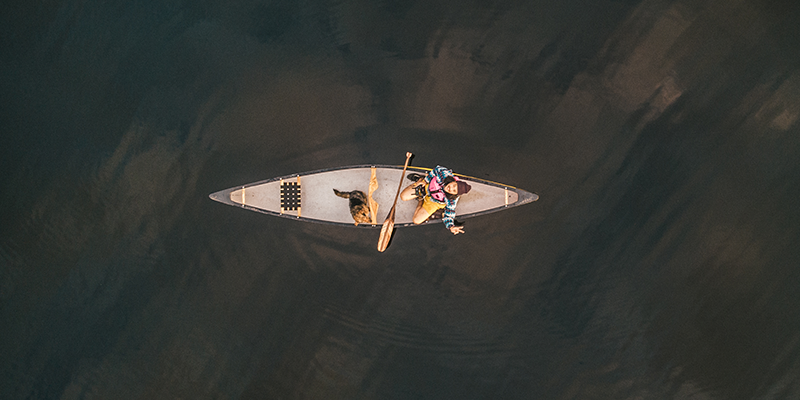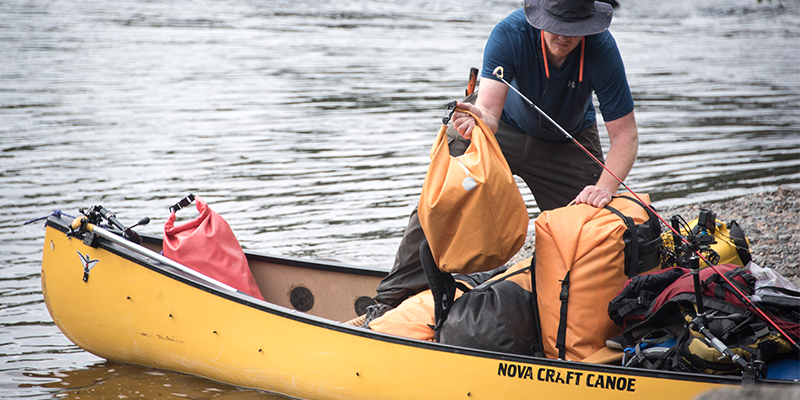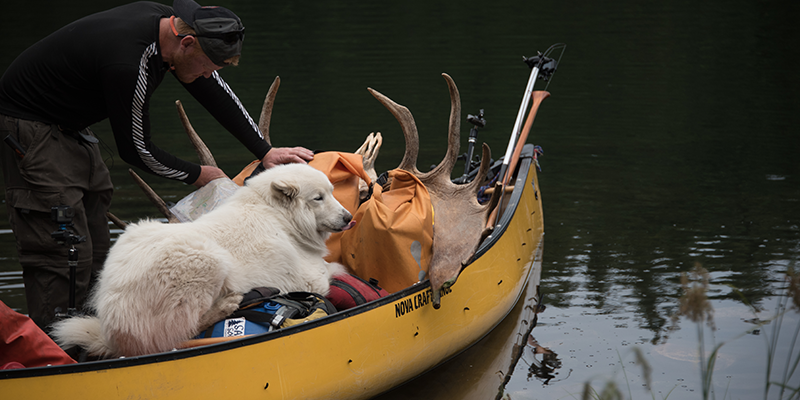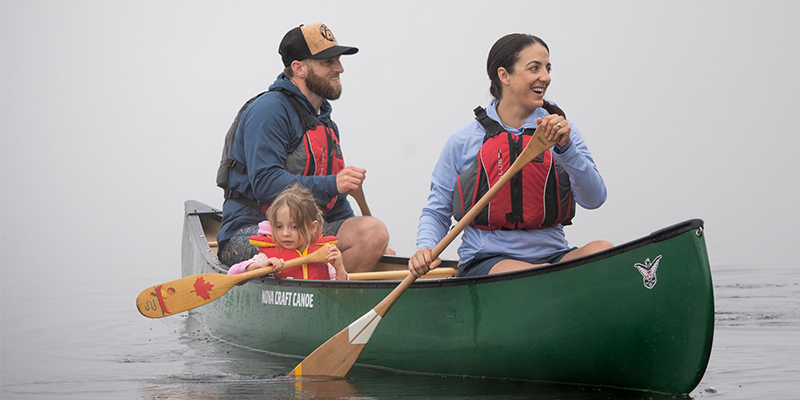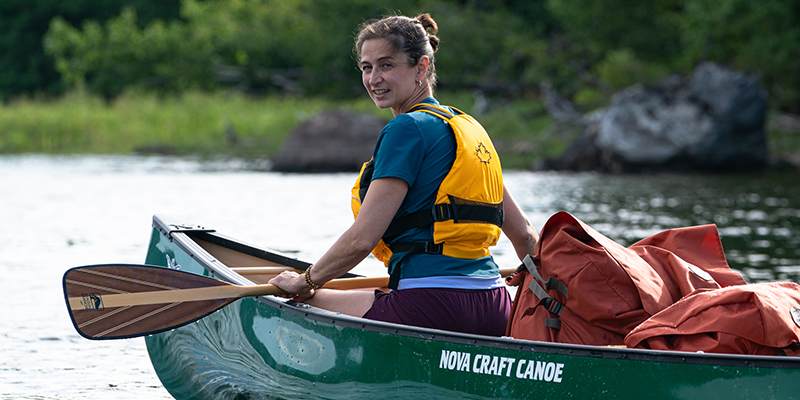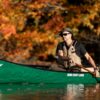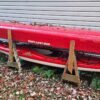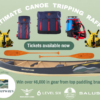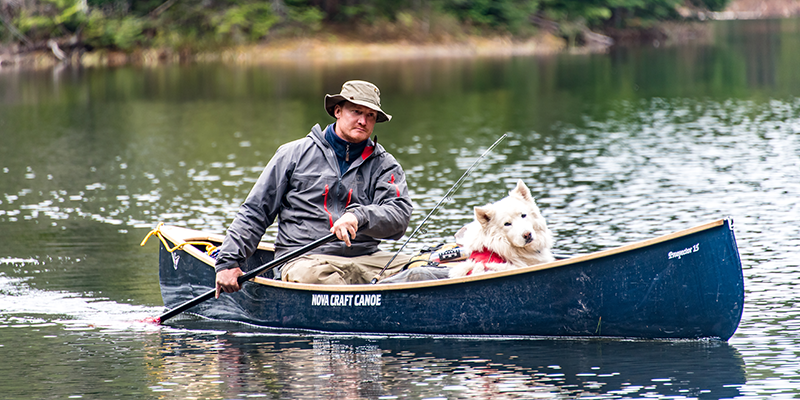
Canoeing can be a peaceful way to connect with nature, a fun activity to spend time with family outdoors or an exhilarating experience riding whitewater rapids on challenging river runs, picking the right canoe for you can be a bit more complicated than you might think.
There are many things to consider: the types of trips you plan to take, the number of people you’ll have a long, and materials, durability, and weight. This guide breaks down everything you need to know to select the perfect canoe for your needs.
Where Do You Plan to Paddle?
Where you plan to paddle is the most important factor in choosing your canoe. To help narrow down your choices, here are six common categories of canoe usage:
- Expedition: Longer trips call for increased seaworthiness and cargo space. Optional spray skirts keep you dry and warm on bigger water.
- Quiet Water Touring: Efficient paddling is a must for quiet water touring, with easy turns and tracking for paddling in lakes and deep rivers.
- Recreation: Your recreational trips whether it is with family, friends or going solo call for a versatile canoe that offers safety, stability, and comfort.
- River Tripping: If you’re going to encounter your fair share of flatwater and whitewater you need a canoe designed to handle high-volume that is rugged and spacious to carry large loads.
- Sport: You need a stable canoe for fishing, hunting, nature photography or travelling with your dog along for company.
- Whitewater: Whitewater paddling calls for increased maneuverability and robust construction. These canoes will feature more “rocker” and the ability to shed waves to stay dry.
Canoe usage is important because you won’t be safe paddling in big river rapids if you buy a canoe designed for flatwater while a whitewater canoe would prove to be difficult to track in flat water.
Understanding “Rocker”
Rocker refers to the hull curve from bow to stern. Lake and touring canoes need very minimal rocker, while if you plan to tackle whitewater rivers, you will want a canoe with moderate to pronounced rocker. The more rocker, the easier the canoe is to handle in challenging water such as the charging waves, currents and rocks you’ll encounter on a whitewater river. With less rocker, more of your canoe’s hull remains in the water – this will translate to straighter tracking, making it better suited for calmer waters and longer trips quietly touring your favourite flatwater destinations.
What Will The Typical Trip Duration Be?
Trip duration will determine how much additional space you need for gear. If you’re just out for a few hours on weekends, then you just need enough space for yourself and passengers with maybe a packed lunch and some water bottles. However, if you are away for a week or more, you’ll need enough space to comfortably carry tents, food, and all the other gear you’ll need to thrive outdoors.
Types Of Canoe Materials
Canoe materials will determine the weight as well as durability and price of your canoe. You need to lift the canoe easily whether you are on your own or have help. You also need a canoe that is durable enough to meet the challenges your paddling presents. There are two general categories of materials to consider when choosing the best material for your new canoe:
Composites
Composites are materials made by combining cloth and resin in a mold to create a material that is both durable yet lightweight. Here is our canoe material weight comparison:
Fiberglass
- Most affordable composite material
- Lighter weight than plastic
- Ideal use: Recreational and cottage
TuffStuff
- Durable, great impact resistance
- Midweight
- Ideal use: Extended flatwater tripping including rocky backcountry
TuffStuff Expedition
- Our most durable and robust composite material
- Heavy-duty expedition grade durability
- Heavier weight
- Ideal use: Extended wilderness trips and whitewater
Aramid Lite
- Extremely lightweight
- More costly
- Ideal use: Flatwater tripping and portaging
Blue Steel
- Our most expensive material
- Extremely rugged
- Extremely lightweight
- Ideal use: Trips with mixed terrain that require portaging
Plastic
We use rotational molding for our plastic canoes, making them sturdy and affordable. Our plastic material is called SP3: Three layers of superlinear polyethylene combine two solid outer layers with a foam middle layer.
SP3 is:
- The most affordable
- The heaviest material
- Ideal use: River or general recreational
For canoe material weight comparison, Blue Steel, Aramid Lte and TuffStuff are the lightest while SP3, fibreglass and TuffStuff Expedition are the heaviest. You also have to consider the price. Although you’ll find Blue Steel and TuffStuff Expedition are more expensive materials, this is because they are designed for use in more extreme canoeing conditions.
Number of People & Canoe Size
Of course, your canoe needs to accommodate the number of people joining you on your canoe trips. Although the average canoe is designed as a tandem or two-person canoe, you can also find 4 person canoes, as well as solo models. If you paddle solo but have a large pet along on your canoe trips, a solo canoe may not be large enough – especially if they’ll want to move around.
Canoe Sizes
The size of your canoe will depend on a few things including number of paddlers and passengers, cargo space, and stability required. Here is how canoe sizes breakdown:
Canoe Lengths
Nova Craft’s tandem canoes range from 15’ to 18’. On average people opt for a 16’ to 17’ canoe because they are ideal if your use and passenger list vary. Also, longer canoes are best for travelling longer distances as you can hold more gear and travel further with less effort at higher speed. Longer canoes also usually track better than shorter ones, which is ideal for travelling on larger lakes. However, if you travel alone, shorter boats make more sense as they are easier to lift, load, maneuver, and transport. Our solo canoes come in 12’, 14’ and 14”10” lengths.
Canoe Width
Width is important because it contributes to space, speed and stability. Known as “beam” by savvy canoers, the narrower the canoe the quicker it is, but also the more tippy. Narrow canoes aren’t a good fit for novice or nervous canoeists, or those with young kids or dogs who might like to move around a lot. If you’re looking for a stable canoe, you’ll want something wider.
Canoe Depth
Deeper boats have better carrying capacity while also keeping water out. However, the deeper the boat and the taller the sides, the higher they’ll sit in the water and more they can be affected by the wind.
Canoe Hull Shapes
The shape of the canoe is based on the hull design, the body of the canoe: The hull shape contributes to a canoe’s stability, speed, and maneuverability.
- Flat canoe bottoms have great initial stability, which means they are most stable when not moving or moving slowly; this is a great feature in a canoe to be used for fishing for example.
- Rounded bottomed canoes move faster through the water, but don’t have great initial stability
- Shallow-arch bottoms offer a happy medium.
Canoe Comparison Based on Specific Paddling
To help you zero in on your ideal canoe we’ve done a quick comparison list based on your specific canoe usage:
Expedition
- MOISIE 16′ 6″:Best in class for whitewater and remote river tripping
- CRONJE 17′: Our most efficient hull for flatwater excursions in the BWCA, for example.
- PROSPECTOR 17′ SP3: Boulder gardens are no obstacle for this rugged SP3 canoe
- PROSPECTOR 18′: Hauls a ton of gear, popular for hunting expeditions
- PROSPECTOR 17′: Versatile hull ready to handle whatever the trip throws its way
- FOX 14′ SOLO: A lake tripper for the minimal soloist
Quiet Water Touring
- PAL 16′: A treat to paddle solo or tandem
- BOB SPECIAL 15′: A classic and crowd-pleasing day or weekend tripper
- HAIDA 17′: An ideal family tripping canoe
- CRONJE 17′: Our most efficient hull for flatwater excursions in the BWCA, for example.
- FOX 14′ SOLO: A lake tripper for the minimal soloist
Recreation
- PAL 16′: A treat to paddle solo or tandem
- MUSKOKA 15’10”: Perfect cottage canoe
- BOB SPECIAL 15′: A classic and crowd-pleasing day or weekend tripper
- HAIDA 17′:An ideal family tripping canoe
- FOX 14′ SOLO: A lake tripper for the minimal soloist
River Tripping
- MOISIE 16′ 6″: Best in class for whitewater and remote river tripping
- SUPERNOVA 14′ 10″ SOLO: For thrill-seeking experienced paddlers
- PROSPECTOR 17′ SP3/16′ SP3: Durable, dependable, affordable
- PROSPECTOR 16′: Versatile hull ready to handle whatever the trip throws its way
- PROSPECTOR 15′: Makes a great solo river tripping canoe
Sports
- TRAPPER 12′ SOLO: Provides a stable platform to fish or hunt from
- MUSKOKA 15′ 10″: Perfect cottage canoe
- HAIDA 17′: An ideal family canoe
- PROSPECTOR 15’ SP3/16′ SP3/17′ SP3: Durable, Dependable, Affordable
- PROSPECTOR 18′: Hauls a ton of gear, popular for hunting expeditions
- PROSPECTOR 17′: Versatile hull ready to handle whatever the trip throws its way
- PROSPECTOR 16′: Versatile hull ready to handle whatever the trip throws its way
- PROSPECTOR 15′: Compact and versatile
Whitewater
- MOISIE 16′ 6″: Best in class for whitewater and remote river tripping
- SUPERNOVA 14′ 10″ SOLO: For thrill seeking experienced paddlers
- PROSPECTOR 16′ SP3/17′ SP3: Durable, Dependable, Affordable
- PROSPECTOR 17′: Versatile hull ready to handle whatever the trip throws its way
- PROSPECTOR 16′: Versatile hull ready to handle whatever the trip throws its way
- PROSPECTOR 15′: Compact and versatile
While there is overlap between the models and canoe usage, this is because each model can be configured to suit the number of people, capacity and trip type. Check out our build your canoe tool to build a canoe that would best suit your needs.
Best Canoes for Families
Paddling a stable canoe for family trips allows you to reduce worry and focus on spending quality time with family in the beautiful outdoors. Here are a few of our top picks for canoes that will help you stay dry by reducing the risk of capsizing when spending a few hours on the lake. You maintain confidence, so everyone is more relaxed.
Did you know we offer a canoe exclusively for kids? The Teddy is a 12’ tandem canoe designed especially for kids to learn how to paddle and improve their confidence on the water. This is also the ideal companion for your family canoe adventures if you like to encourage your children’s independence while supervising them from your own canoe. If you prefer travelling in one canoe on family adventures, choose a longer canoe like the Prospector 18’ which is ideal for family tripping on longer adventures. You’ll have the space you need for kids and camping gear while keeping everyone safe.
Best Solo Canoes
A solo canoe trip allows you to unwind from your busy day-to-day life and reconnect with nature and yourself. The following are our three solo models that will enable you to enjoy the great outdoors.
- SUPERNOVA 14’ 10” SOLO: The ideal canoe for whitewater or river tripping. The Supernova will keep you dry while giving you the ability to perfectly surf a wave. Experienced paddlers will appreciate this canoe when exploring in rapids.
- FOX 14’ SOLO: The perfect canoe for quiet water touring. The Fox’s characteristics are perfectly suited for solo paddlers looking to spend an evening paddling the lake or even a weeklong trip in the backcountry.
- TRAPPER 12’ SOLO: A compact canoe suitable for sports and recreation. The Trapper offers stability but does not sacrifice performance. Whether you want a stable platform to fish or a small efficient canoe to explore the backcountry, this is the canoe for both.
For those who want to canoe solo from time to time but also have the ability to canoe in tandem the following canoes offer the best of both worlds:
The PROSPECTOR 15’ is a popular canoe model with our solo canoeists as they offer the versatility of being used solo or tandem, while the additional gear capacity provides the perfect amount of space for those longer solo trips.
Nova Craft Canoe carries the models that will meet any canoeists needs.
Not sure where to start? Use our Build Your Canoe tool, and see what canoe is best for you. Or, give us a call at 866-88-CANOE for a recommendation and advice from our team of knowledgeable staff.
